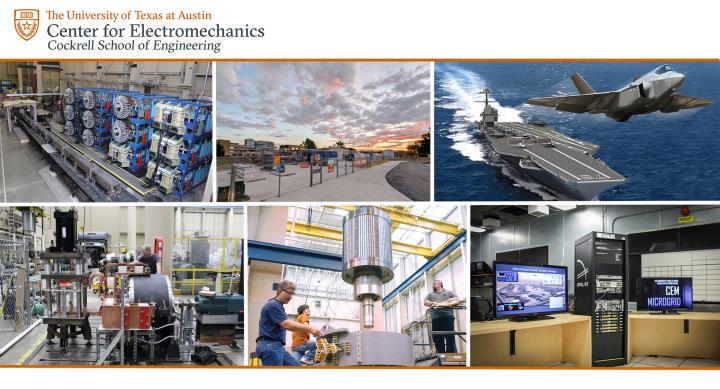
Mission:
To transition Power and Energy Solutions into Products and Students into Leaders by using expertise in modeling, prototyping, and testing of electric machines, energy storage, grid solutions and controls, and hydrogen energy systems.
Vision:
To provide a collaborative R&D environment where academia, government, and industry can come together to develop system-level power and energy solutions that address societal electrification challenges and change the world.
About Us:
Since its founding in 1972 by Dr Grady Rylander and Dr Herb Woodson, the Center for Electromechanics (CEM) has been a leader in innovative electromechanical solutions. Initially recognized for its advancements in pulsed power and rotating machinery, CEM quickly built a strong reputation for developing first-of-its-kind solutions and forming solid partnerships with industry and government. Over its history, CEM has continually adapted its research in response to evolving technology needs while maintaining a strong focus on research and innovation.
CEM provides an ideal R&D environment with extensive fabrication and testing facilities for large-scale, first-of-their-kind research initiatives. This environment encourages collaboration between the university, industry, and government, while providing a comprehensive approach to solving global power and energy challenges. CEM prides itself on transitioning technology from academic environments to real world applications with the ability to perform research “at scale” – a statement we do not make lightly and is a capability that sets us apart from traditional academic research.
At the core of CEM is its people. The center includes full-time dedicated research staff – engineers, scientists, and technicians – that are essential to bridging the gap between academia and industry. The staff capabilities include high levels of expertise in power and energy systems modeling, along with electrical and mechanical analysis and design proficiency, that enable us to solve challenging problems and provide novel solutions.
CEM's commitment to advancing technology has led to innovations that impact both academic research and real-world applications. Its contributions have spanned key areas such as national defense, space exploration, the electric grid, and various industrial applications. A prime example is the Electromagnetic Aircraft Launch System (EMALS) success. Under this program, CEM led the prototype development of the high-speed generator, which is now an integral part of the Navy’s latest aircraft carriers. Today, CEM remains at the forefront of research in electric machines, grid solutions, transportation electrification, and sustainable energy solutions.
Staying true to the University's mantra, "What starts here changes the world," CEM is proud of its research integrity, partnerships, and ability to make a meaningful impact globally. If you would like to support or collaborate with CEM, please connect with one of our research staff or myself through our contact page.
Hook ‘Em!
Michael Lewis, Director

